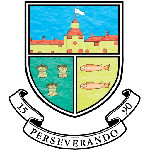Biology
| Dr P Smith (Head of Team) | psmith@conyers.org.uk | Miss N Crosby | ncrosby@conyers.org.uk |
| Mrs L McGuiness-Brown | lmcguinness-brown@conyers.org.uk | Mr A Walton | awalton@conyers.org.uk |
| Mrs H Harrington | hharrington@conyers.org.uk |
Key Stage 5 Curriculum Map
Curriculum Intent
Enthuse and engage each and every student with science and the scientific world.
Students appreciate how the theories and concepts they are studying relate to their everyday life and how science enriches wider society
To equip and develop, within students, a wide variety of transferable skills that meet their whole-life learning needs.
Key Knowledge and Skills
Key knowledge areas in which all pupils are expected to have developed an appreciation are: the chemical structure of biological molecules, the ultrastructure of cells, cell division, the transport of molecules across cell membranes, how the immune system functions at a cellular level, how substances are exchanged across surfaces to obtain molecules the organism needs and remove waste molecules, the mass transport of substances around the body of organisms, how DNA codes for proteins, how DNA is inherited and why variation is important at an individual and population level in terms of biodiversity and evolution, the biochemical pathways of photosynthesis and respiration, how energy and nutrients are cycled in ecosystems, how organisms interact with each other and respond to changes to survive, how gene expression is controlled and developments in DNA technology.
Students should, within the context of these areas, be able to:
- Use conceptual models and theories to make sense of the observed natural phenomena, giving sound explanations of said phenomena using a wide range of appropriate scientific ideas, language, knowledge and understanding;
- Plan, carry out, draw conclusions and evaluate the validity of practical laboratory work;
- Use appropriate mathematics to support problem solving, analysis and the drawing of robust conclusions.
- Evaluate the impact on the environment, and society, of aspects of biology
Sequence Discussion
Students first study the basic building blocks of organisms: their biological molecules and cells. This leads to understanding how these work together in organ systems and in genetic and ecological aspects. In Y13 key biochemical pathways are studied alongside how the nervous and hormonal systems coordinate response to changes to enhance survival. This leads to how genes are expressed, inherited, can cause cancer and drive evolutionary change at population level and then finally how technological developments using DNA have been useful to society.
Year 12
Half Term 1
Teacher 1 = Biological molecules
Teacher 2 = Cells
Half Term 2
Teacher 1 = Biological molecules
Teacher 2 = Cells
Half Term 3
Teacher 1 = Organisms exchange substances with their environment
Teacher 2 = Genetic information, variation and relationships between organisms
Half Term 4
Teacher 1 = Organisms exchange substances with their environment
Teacher 2 = Genetic information, variation and relationships between organisms
Half Term 5
Teacher 1 = Organisms exchange substances with their environment
Teacher 2 = Genetic information, variation and relationships between organisms
Half Term 6
Revision
Year 13
Half Term 1
Teacher 1 = Energy transfers in and between organisms
Teacher 2 = Organisms respond to changes in their internal and external environments
Half Term 2
Teacher 1 = Energy transfers in and between organisms
Teacher 2 = Organisms respond to changes in their internal and external environments
Half Term 3
Teacher 1 = Genetics, populations, evolution and ecosystems
Teacher 2 = The control of gene expression
Half Term 4
Teacher 1 = Writing the paper 3 essay
Teacher 2 = Revision

